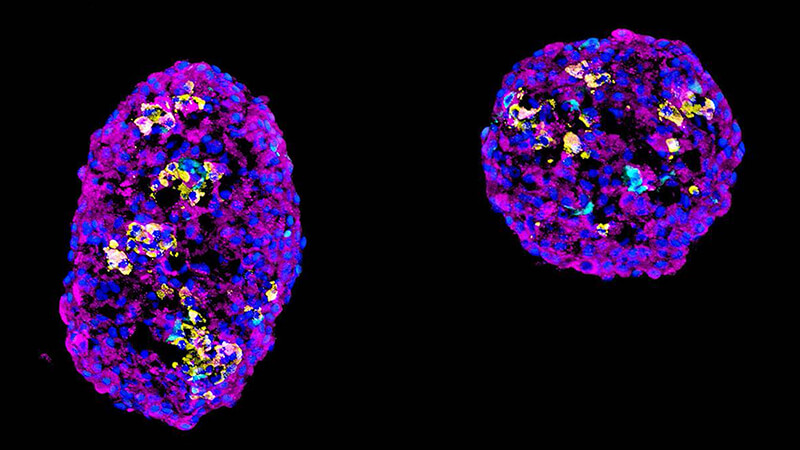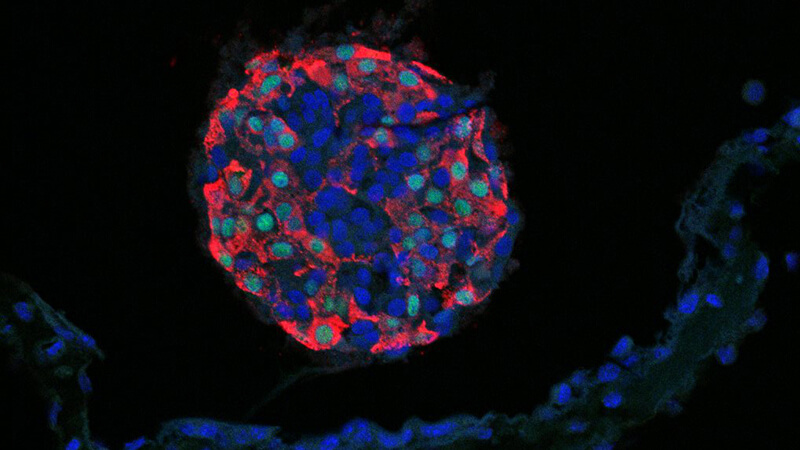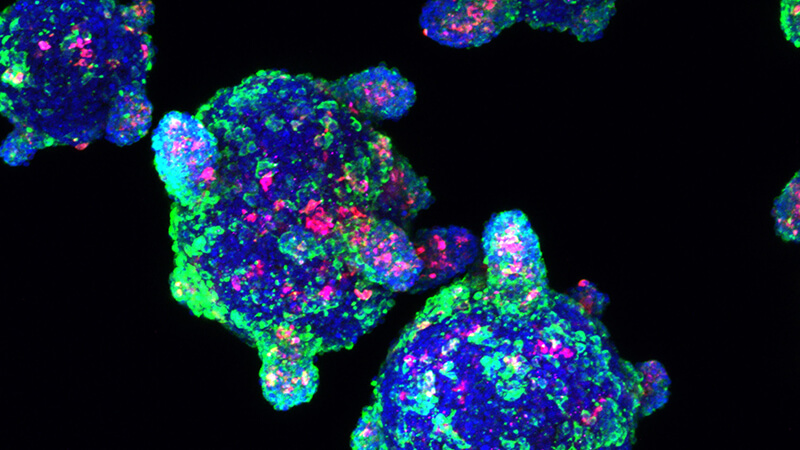The many stages of beta cell development.
Applying developmental biology to understand and change the course of diabetes
Our goal is to change the lives of diabetes patients and their families.
Our research aims to eliminate the present practice of regular blood checks and insulin injections, replacing them with insulin-producing cell transplants. That means finding new ways to produce and transplant pancreatic beta cells, which measure glucose levels and secrete just the right amount of insulin, and ensure they can evade attack by the immune system.
Areas of Investigation

In vitro generation of stem-cell-derived beta cells
We have developed methods to make hundreds of millions of functional beta cells from human stem cells (ES or iPS cells). This allows us to pursue research that will lead to new treatments – or even a cure – for Type 1 diabetes. Currently, we are expanding on this work to study how one could make all the islet endocrine cells, including alpha (glucagon-producing) and delta (somatostatin-producing) cells, and produce islet-like clusters that allow us to carry out metabolic studies on islet function.

Immune modeling of Type I diabetes
We use induced-pluripotent stem (iPS) cells derived from diabetes patients to explore the root cause(s) of the disease. We create clusters of islet cells to study both diabetic islet biology and the cellular and genetic basis of the autoimmune attack in Type 1 diabetes.

Engineering protection of beta cells from the immune system
By genetically modifying stem cells, the starting material for islet clusters, we aim to gain more complete control of in vitro differentiation by altering genes that determine cell fates. In collaboration with bioengineers, we explore physical protection following transplantation. We also genetically alter the islet cells so as to blunt or avoid an immune attack.